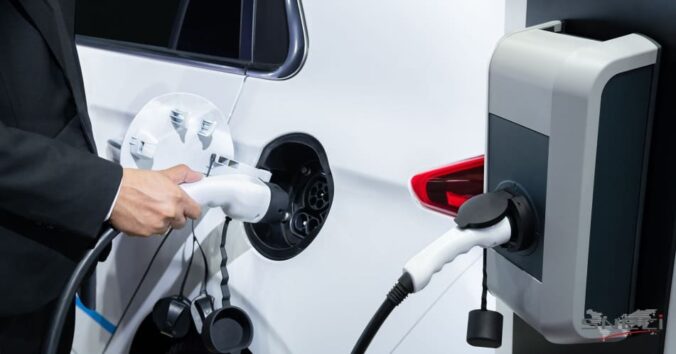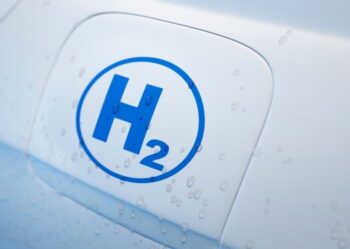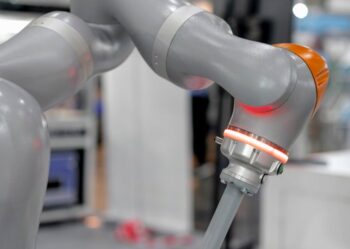Electric vehicle trends in Europe, car manufacturers’ plan, regulations, green mobility …

In this September, we decided to have a European overview of the automotive sector in Europe by focusing on diesel, regulations, the market over the first 8 months of the year and what cars manufacturers are planning for 2030 in order to anticipate tomorrow’s mobility.
Diesel vehicle vs. electric vehicle:
In France, given the upcoming regulations and the restrictions already in place (e.g. ZFE), sales of new diesel vehicles continue to decline. For example, new diesel vehicle sales in July 2021 alone accounted for 22% of transactions, according to AAA Data.
Paradoxically, sales of electric vehicles, after having risen sharply, seem to be reaching a first ceiling, although the internal combustion vehicle remains the favorite for the French and Europeans market. As we mentioned in one of our articles, manufacturing and recycling costs, as well as purchase prices and charging stations; which are still too few and far between ; are still the main obstacles to deploy the electric vehicles, despite the regulations that are pushing consumers and manufacturers to abandon combustion engines.
As far as charging stations are concerned, as an indication, the top 5 countries with the most chargers per 100 kilometers (source ACEA) are:
- Netherlands (47.5)
- Luxembourg (34.5)
- Germany (19.4)
- Portugal (14.9)
- Austria (6.1)
France has 4.1 chargers per 100km.
Petrol engine, still representing for 42% of registrations, is also experiencing setbacks with fuel prices having risen by 20% since 2020 in France.
On the other hand, the so-called less polluting models, such as hybrids, micro-hybrids, plug-in hybrids and 100% electric vehicles, are taking advantage of the current climate regulations to take off, with the new car market now reaching over 32%.
The regulations on heating systems, fuel costs, etc., have led to a clear lack of interest in diesel, which is nevertheless not ready to disappear completely and still leaves a good deal of room for diesel.
On the buyers’ side, there is a reluctance towards electrified technologies, which are considered to be not reliable enough but above all too expensive. A large number of buyers are still turning to diesel vehicles, since sales of used diesel vehicles represented 55% of total used vehicle sales in July 2021. A buoyant and receptive used car market where since 2021 up to 3 times more models have been sold.
Thermal vehicle vs. electric vehicle: regulations:
French regulations and more specifically the Climate Law of 24 July 2021 aims to encourage buyers to move towards so-called “clean” and electrified vehicles.
At the same time, the European Commission has decreed the end of the marketing of new thermal vehicles from 2035.
The Climate Law published in the Official Journal on 24 July 2021 provides for:
- The end of advertising for polluting products: any advertising or communication proposing a discount or reduction that cancels out or reduces the effect of this penalty for the consumer is prohibited. In case of non-compliance with the obligation to include a message encouraging the use of active mobility (carpooling, public transport, etc.) on advertisements for land-based motor vehicles, a fine of €50,000 per broadcast is now apply.
- Promoting the availability of spare parts: From 1 January 2024, in order to promote the availability of spare parts for end-of-life vehicles, scrap dealers, garages, etc. will be required to take back these vehicles free of charge from private individuals at their place of ownership. From 2023 onwards, car manufacturers will no longer be the only ones allowed to sell car wings, bonnets, bumpers, windscreens or mirrors. The Climate Law will allow equipment manufacturers to gradually compete with them.
- More electric charging stations: provision or obligation to create charging stations in condominiums, support for the connection of charging stations to the electricity grid… Article 28 “provides for a three-year experiment to set up dedicated lanes for certain categories of vehicles, such as public transport, vehicles used for carpooling, or very low-emission vehicles, on motorways and express roads in the national road network and the departmental road network serving low-emission mobility zones”.
- End of sales of combustion engine vehicles: the end of sales of new cars (except for companies) emitting more than 123 grams of carbon dioxide per kilometer according to the WLTP standard (or 95 g/km in the NEDC), by 1 January 2030. Vehicles emitting more than this threshold may account for a maximum of 5% of all annual sales of new passenger cars, Article 25 states. The end of sales of new heavy-duty vehicles used to transport people or goods and using mostly fossil fuels is also announced for 2040.
- Formalization of the ZFE-m: Establishment of a low-emission mobility zone is mandatory before 31 December 2024 in all agglomerations of more than 150,000 inhabitants located on the metropolitan territory.
The electric vehicle market in Europe in the first half of 2021:
In the first half of 2021, registrations of electric vehicles in the European Union increased significantly. The market share of battery electric vehicles increased from 3.5% in the second quarter of 2020 to 7.5% in the first six months of the year, while plug-in hybrids accounted for 8.4% of all new cars sold.
The breakdown by fuel type for new cars in the first half of 2021 is as follows:
- Battery electric 7.5
- Hybrid 19.3%,
- Petrol 41.8
In the first 6 months of 2021, both petrol and diesel powertrain registrations increased in the EU (by 25.3% and 7.8% respectively). As a result, diesel still has a market share of 20.4%, compared to 29.4% in Q2 2020. At the same time, the market share of petrol vehicles has contracted by 10 percentage points (from 51.9% in April to June 2020 to 41.8% this year).
As for electric vehicles, battery electric vehicles (BEVs) increased by 231.6%, reaching 210,298 cars, thanks to Spain and Germany, which together represent an increase of +372.7% and +357.0% respectively.
As far as plug-in hybrid electric vehicles (PHEVs) are concerned, it is even more impressive for the first half of 2021 with an increase of 255.8% in registrations, i.e. 235,730 units. Moreover, our Italian neighbors are among the fastest growing markets in this segment with 21,647 plug-in cars registered from April to June, an increase of 659.3% year-on-year.
The other three main EU markets have also recorded impressive gains in the PHEV segment so far this year: Spain (+430.3%), France (+276.4%) and Germany (+269.9%).
Let’s be relative about these figures, which, while impressive, do not represent even a third of the market for registered vehicles in Europe.
Hybrid electric vehicles (HEVs) account for 541,162 units sold in the EU. Almost all EU markets recorded double or even triple-digit percentage gains during this period, allowing hybrid registrations to grow by 213.5% compared to a year ago.
Demand for natural gas vehicles (NGVs) in the EU rose by 41.8% to 13,497 units in the second quarter, with Italy alone accounting for 75% of EU sales in this segment.
Registrations of LPG cars more than doubled (+134.1%) to 59,363 units, driven by a strong performance in Italy (+89.5%) and France (+266.0%), the two largest EU markets for LPG cars.
In the face of such growth, manufacturers are putting plans in place to deliver a green industry and respond to ongoing legislation
The major players in the European construction industry are moving towards “green mobility” and the arrival of a new Chinese manufacturer determined to penetrate the European market:
5 major players have unveiled their strategic plan to promote the mobility of the future with no more thermal vehicles sold by 2030:
Volkswagen’s “New Auto” plan for 2030:
- To become one of the top five selling brands in Europe
- To become the leading European volume manufacturer in India
- To become the leading European volume manufacturer
- To become the leading European volume manufacturer in North Africa.
- To launch at least three more 100% electric models before 2025.
Stellantis Group’s plan to 2030:
- 70% of sales of battery-electric (BEV) and plug-in hybrid (PHEV) light vehicles (PC+LCV) in 2030
- Three gigafactories
- 4 new platforms
- Launch of two new battery chemistries from 2024
The Renault Group’s plan by 2030 :
- 90% electrified vehicles: 65% full hybrids (FHEV) and plug-in electrics (PHEV+BEV) in 2025.
- Two gigafactories planned in France: one in 2024 and the other in 2026.
- Two platforms for new electric car ranges
Mercedes’ plan for 2030:
- Become a 100% electric brand from 2030.
- Three modular platforms from 2025
- Eight gigafactories worldwide for 200 GWh battery capacity
- An electrified proposition (BEV or PHEV) at every level of the range from 2022
Chinese Xiaopeng’s plan to land in Europe:
- The 100% electric Xpeng G3, which has been on sale in China since 2018, is coming to Europe today
- The Xpeng G3 is a C-segment SUV with a length of 4.45 m
- The Chinese model is equipped with a 66 kWh CATL battery
- A competitive price for the Xpeng G3 allowing a better penetration of the European market
As you can see, manufacturers are competing with each other in terms of innovation to comply with regulations but also to offer environmental solutions for the mobility of tomorrow.
Moreover, at SNECI, we already support a number of these players on a daily basis through our dedicated technical expertise in 45 countries thanks to our 450 experts.
Our international agile and efficient expertise at SNECI
Our expertise is based on two areas:
- Improving industrial performance: or how to accompany our customers in tomorrow’s Industry 4.0 through project management, quality, training, purchasing and logistics, sorting and reworking operations… but also Monozukuri.
- Business development: our teams help manufacturers and suppliers to find the best partners worldwide for all your needs. Strategy consulting, market research, business development, financing support…
Choosing SNECI means benefiting from nearly 70 years of technical expertise dedicated to the automotive industry, so don’t wait any longer, boost your company’s performance by contacting our teams.






